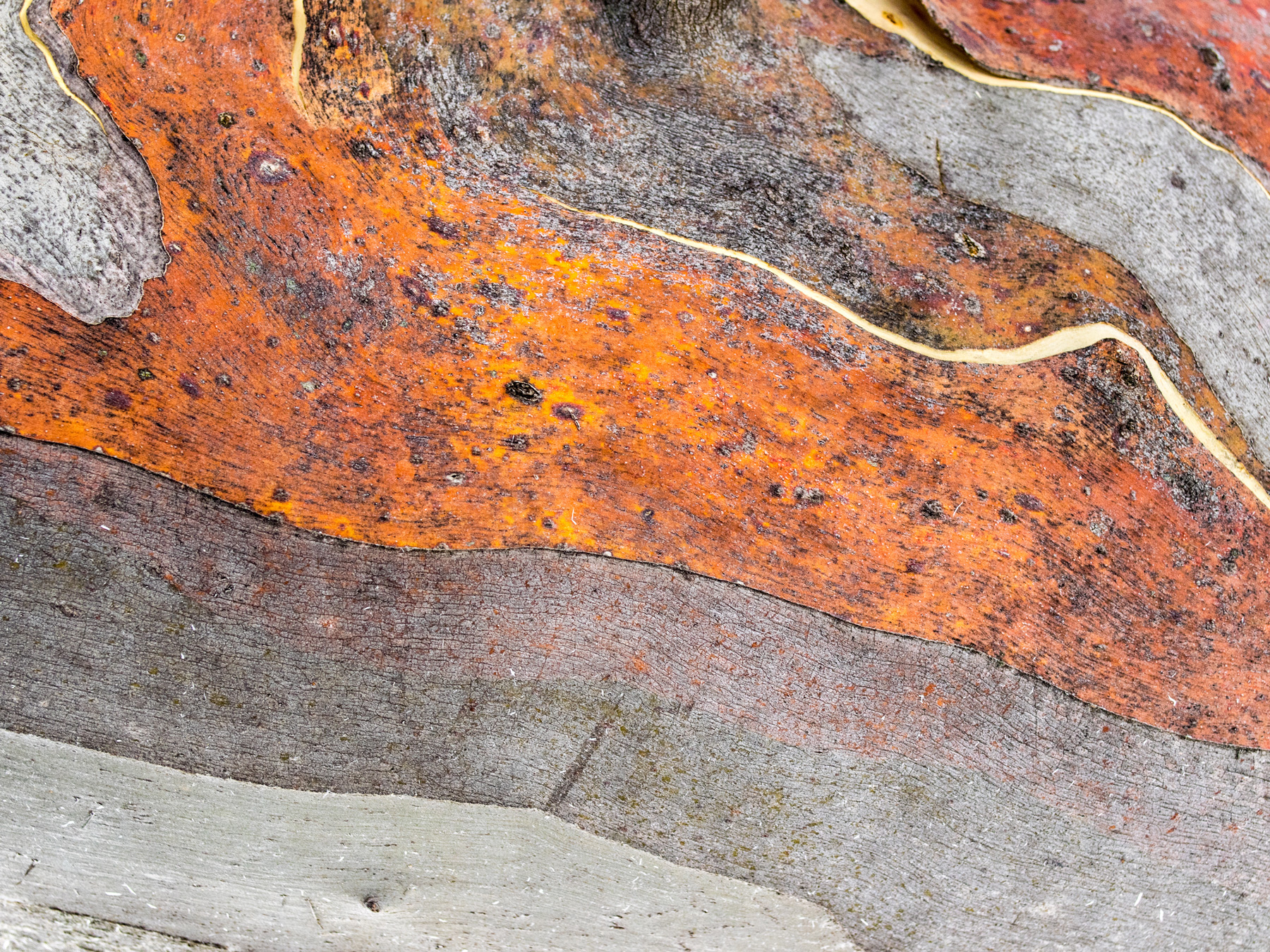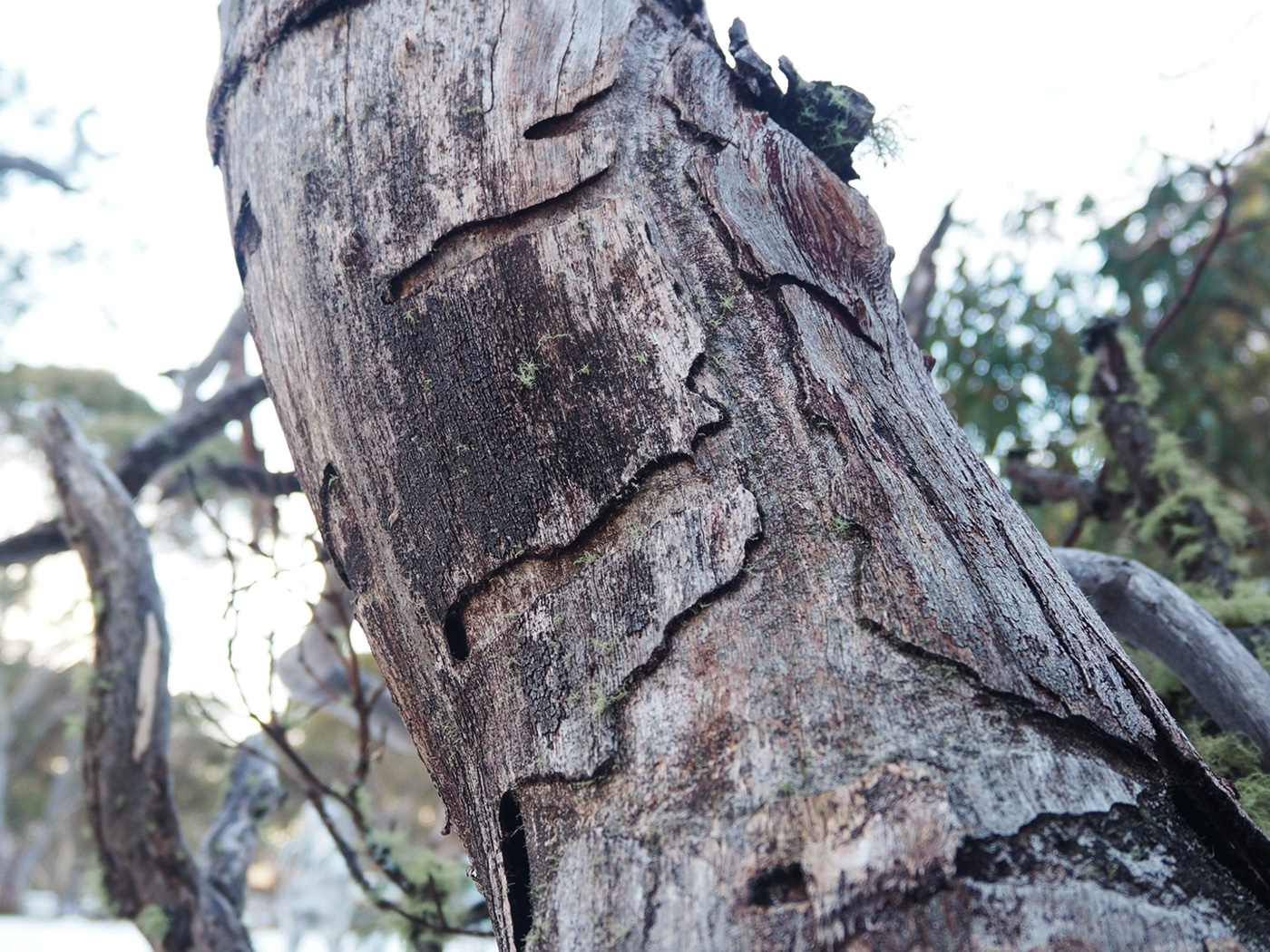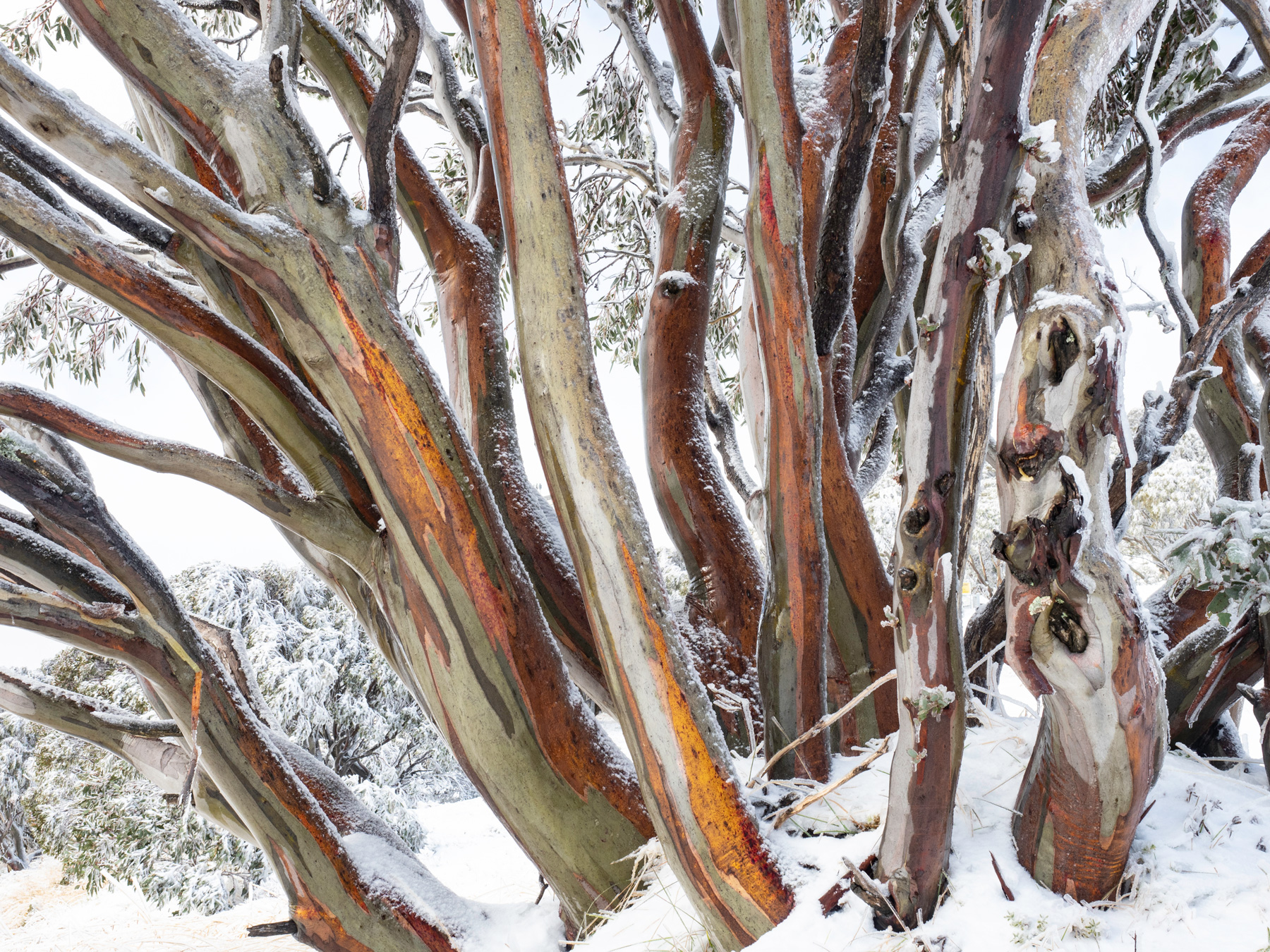An icon in trouble
The snow gum is known for its hardiness, withstanding the harsh alpine conditions. The threats it now faces, however, may be more than the tree can handle.
Any visitor to the Australian Alps would be no stranger to the snow gum. Its rainbow bark and twisted trunk are synonymous with the high country itself.
“They are the iconic tree of the mountains”, says Cam Walker of Mountain Journal fame and Friends of the Earth.
Cam has spent many decades working with the environment, and is well acquainted with the forests of south-eastern Australia.
On Saturday the 2nd of September, as part of the Victorian Backcountry Festival, he will be leading a tour near Mt Hotham to share his knowledge of the snow gums.
Participants will ski, splitboard or snowshoe out to Mt Tabletop to learn about what is occurring in our forests. (RSVP here)
Tragically, Cam says, because of climate change, the trees are “facing the prospect of ecological collapse”.
A burning landscape
Fires have always had a presence in the Australian landscape. The mountains are no exception, and its forests are adapted to it, explains Cam.
Following a bushfire, snow gums are able to regenerate from the ground, thanks to a store of carbohydrates hidden beneath the surface.
However, more frequent fires, fuelled by increasingly drier woodland, reduce their ability to bounce back.
As snow gums are slow-growing, multiple burns in quick succession diminish their chance of regeneration.
Friends of the Earth (FoE) have been investigating the impact of more regular fires on the health of snow gum communities. Cam shared their findings with POW:
“We are now witnessing the collapse of some forests, losing parent trees that are being replaced by grass and shrubs”.

A hidden threat
Curiously, snow gum populations untouched by recent burns are still dying.
A closer look at these trees may reveal what else is laying waste to the trees.
Introducing the longicorn beetle.
Its larvae feed on the living tissue of the tree, forming distinctive horizontal scars. In doing so, they cut off the movement of water and nutrients up and down the tree, ringbarking it.
This process begins in the upper branches, and once it reaches eye level, the tree’s health is likely in critical condition, potentially close to death.
Entire stands of snow gums are quickly falling victim to the dieback, as the phenomenon is known, and has been noticed throughout NSW, Victoria and the ACT.


Changing climate, shifting relationships
Unlike many pests wreaking havoc on Australian flora, the longicorn beetle is not an introduced species.
This native insect is thought to have lived amongst eucalypt populations for a long time, playing a sustainable role within the ecosystem.
In recent history, however, the world has changed. A warming climate has had far-reaching impacts on ecosystems the world over, and changes are happening faster than species can adapt and evolve.
The mountain air has become warmer and drier, drawing more moisture out of the trees. This creates conditions for the longicorn beetle to thrive.
Whilst healthy, well-hydrated trees can control beetle populations, drier gums let the insect proliferate to unsustainable levels.
With the beetle infestation, coupled with increasingly more frequent fires, snow gums are facing a perfect storm.
A natural ally
The snow gum is not just valued by the people that visit the high country. It also plays a vital role in maintaining the ecosystem and the snowpack.
As the only tree to grow above the snow line, it holds the alpine ecosystem together. Take it away, and the entire food chain is in jeopardy.
The trees also act as a natural reservoir, capturing blowing snow, and water from fog. Their control of snowmelt and water runoff is vitally important to the Murray Darling Basin, with their range being the source of 26% of its water.
Cam cannot understate their value:
“Long-unburnt snow gum forests are important for ecosystem services, are drawcards for tourists, and have conservation values, but they are now exceedingly rare, comprising less than 1% of Snow gum forests in the Victorian Alps.”
The snow gum is a major asset in our fight to protect our snow and alpine environment. We cannot afford to lose it.

You can help save the snow gum
Scientists and conservationists are working hard to find solutions.
They need as much data as possible to construct the big picture, and you can help. Anyone planning a backcountry tour (or hike in the green season) can contribute to saving the snow gum.
For fire affected trees
FoE has been mapping the extent of this loss, developing strategies to have the forests protected and lobbying the state government to intervene.
You can add to their knowledge by reporting your own sightings of fire-affected snow gum populations here.
For beetle-affected trees
Scientists are only at the early stages of understanding the longicorn-induced dieback, hence a similar project has been set-up specifically for mapping this issue specifically.
You can record your own observations of beetle infestation with the High Country Dieback Network at https://www.saveoursnowgum.org.
With our help, these organisations will use collected data to gain a broader understanding of this issue and integrate this knowledge into finding a solution.
RSVP Here
Meet at JB Plain* 9:30am Saturday Sept 2nd. Expected finish 12pm.
*Location may change based on snow conditions.
